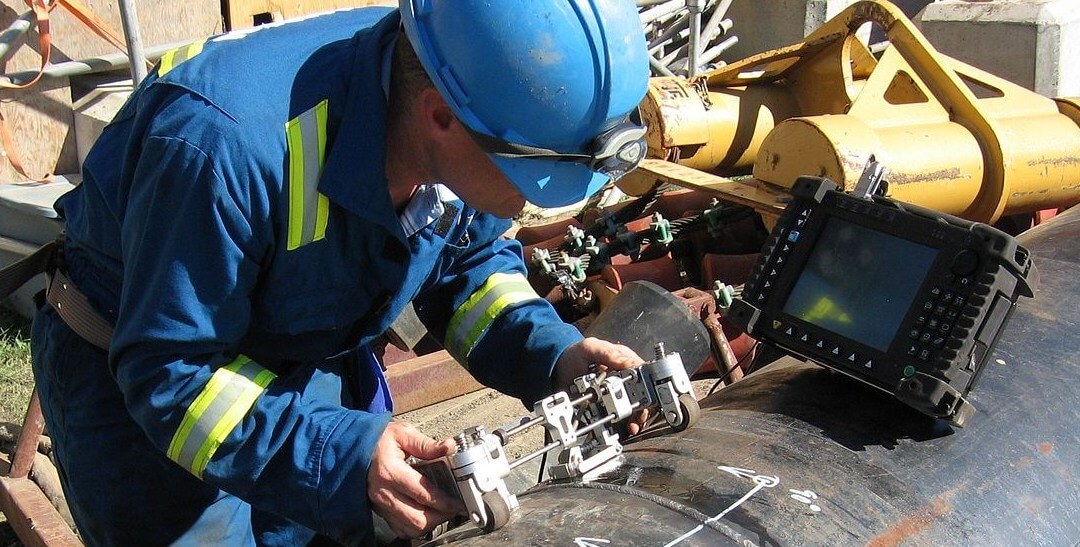Welcome to the world of Non-Destructive Testing (NDT), where precision and accuracy are paramount.
If you’re eager to delve into this fascinating universe, look no further than NDTTanknicians.com. NDTTanknicians services on this comprehensive online platform is a treasure trove of information, offering in-depth insights into the intricacies of NDT techniques, equipment, certification programs, and more.
At NDTTanknicians.com, we understand the importance of NDT in various industries. From aerospace and automotive to oil and gas, NDT plays a crucial role in ensuring the integrity and safety of structures, components, and materials. Our goal is to provide you with a comprehensive guide on different NDT techniques employed across these industries.
Equipped with an extensive range of articles and resources about NDT equipment and tools, we aim to empower professionals like you with the knowledge required for accurate testing procedures. Whether it’s ultrasonic testing or magnetic particle inspection, our platform covers it all.
Furthermore, we recognize the significance of continuous learning and professional development in the field of NDT. That’s why we offer detailed information about certification programs and training opportunities that will help you enhance your skills.
Join us at NDTTanknicians.com today – let’s explore the depths of this captivating universe together!
Key Takeaways
– NDTTanknicians.com offers comprehensive information on NDT techniques, equipment, certification programs, and more.
– NDT plays a crucial role in industries like aerospace, automotive, and oil and gas, ensuring the integrity and safety of structures, components, and materials.
– NDT methods used in the aerospace industry include ultrasonic testing, magnetic particle inspection, radiographic testing, and eddy current testing.
– NDT certification provides recognition and credibility as an expert in non-destructive testing techniques.
Introduction to Non-Destructive Testing (NDT)
NDT is crucial for ensuring the integrity of materials without causing damage. It provides an overview of NDT methods that are widely used in various industries, including the aerospace industry.
One of the main applications of NDT in the aerospace industry is to inspect and evaluate aircraft components such as wings, fuselage, and engines. By utilizing techniques like ultrasonic testing, magnetic particle testing, and radiographic testing, NDT can detect cracks, corrosion, and other defects that may compromise structural integrity or performance.
These methods play a vital role in maintaining safety standards and preventing catastrophic failures in flight operations. Exploring different NDT techniques allows professionals to choose the most appropriate method based on material type, component size, and inspection requirements. This ensures accurate assessments and enhances overall quality control measures within the field of non-destructive testing.
Exploring Different NDT Techniques
Let’s take a closer look at the various NDT techniques available for exploring different materials.
One commonly used technique is eddy current testing, which involves passing an alternating current through a conductive material and detecting any changes in the electrical conductivity. This method is particularly useful for detecting surface cracks, corrosion, and variations in material thickness.
Another widely used technique is ultrasonic testing, where high-frequency sound waves are transmitted into a material and the reflected waves are analyzed to determine internal flaws or defects. Ultrasonic testing can provide detailed information about the size, shape, and location of defects within a material.
These two techniques are just a glimpse into the wide range of NDT methods available for inspecting and evaluating materials without causing damage. Understanding the importance of NDT in various industries is crucial for ensuring safety and reliability…
Understanding the Importance of NDT in Various Industries
One must comprehend the significance of NDT in diverse industries to ensure safety and reliability. Quality control is of utmost importance in any industry, as it directly impacts the overall performance and longevity of products or structures. NDT plays a crucial role in maintaining high standards of quality control by detecting defects, flaws, or irregularities that may compromise the integrity of materials or components.
By employing NDT technology, industries can identify potential issues before they escalate into costly failures or accidents. This proactive approach not only saves time and resources but also enhances the overall efficiency and productivity of operations. The benefits of NDT extend beyond just preventing catastrophic events; it also helps in reducing downtime, minimizing maintenance costs, and increasing customer satisfaction.
Understanding the importance of NDT empowers industries to make informed decisions regarding product development, manufacturing processes, and risk management strategies. Transitioning into the subsequent section about ‘ndt equipment and tools: a comprehensive guide,’ one should delve deeper into understanding how these technologies are implemented effectively.
NDT Equipment and Tools: A Comprehensive Guide
Understanding the significance of NDT equipment and tools is vital for industries to effectively implement these technologies and ensure efficient operations. When it comes to NDT equipment selection, there are several key factors to consider.
Firstly, the type of inspection required will dictate the specific equipment needed, such as ultrasonic or magnetic particle testing devices.
Secondly, understanding the capabilities and limitations of different equipment models is crucial in making an informed decision.
Lastly, considering the cost-effectiveness and long-term maintenance requirements is essential for optimizing investment.
In addition to selecting the right equipment, proper NDT tool maintenance plays a critical role in ensuring accurate results and prolonging their lifespan. Regular calibration and routine inspections should be conducted to guarantee that tools are functioning optimally.
Adequate storage conditions should also be maintained to prevent damage or degradation.
As we move forward into discussing NDT certification and training programs, it’s important to understand how these foundational aspects set the stage for successful implementation.
NDT Certification and Training Programs
Enhance your skills and become a certified NDT technician through comprehensive training programs that will empower you to excel in the industry. NDT certification benefits are numerous, providing you with recognition and credibility as an expert in non-destructive testing techniques. By obtaining a certification, you demonstrate your knowledge, competence, and adherence to industry standards.
To achieve this certification, certain ndt training requirements must be met. These typically include completing specific coursework or training hours, passing an examination, and maintaining continuing education credits.
The training programs cover various aspects of NDT, such as ultrasonic testing, radiography, magnetic particle testing, liquid penetrant testing, and visual inspection. These programs equip you with the necessary technical skills and theoretical knowledge to perform accurate and reliable inspections.
As you delve into the world of NDT certification and training programs, you’ll realize the importance of building a community of ndt professionals for networking and collaboration opportunities.
Building a Community of NDT Professionals: Networking and Collaboration Opportunities
By connecting with fellow NDT professionals, you can tap into a valuable network that offers endless opportunities for collaboration and networking.
Networking events provide a platform to meet like-minded individuals in the industry, exchange ideas, and develop professional relationships. Attending these events not only allows you to expand your knowledge through discussions and presentations but also opens doors for potential partnerships and career advancements.
Online forums serve as virtual meeting places where NDT professionals can interact, share experiences, seek advice, and stay updated on the latest developments in the field. These platforms enable active participation in discussions related to specific techniques or equipment used in non-destructive testing.
By actively engaging in networking events and online forums, you gain access to a supportive community of experts who can offer guidance and support throughout your career journey.
Conclusion
In conclusion, delving into the NDT universe through ndttanknicians.com has provided you with a comprehensive understanding of non-destructive testing (NDT).
By exploring various NDT techniques and their importance in different industries, you’ve gained valuable insights into this crucial field.
The detailed guide on NDT equipment and tools has equipped you with the necessary knowledge to navigate this aspect effectively.
Additionally, the information on certification and training programs ensures that you can further enhance your skills as an NDT professional.
Lastly, by highlighting networking and collaboration opportunities, ndttanknicians.com encourages you to build a strong community within the NDT industry.






